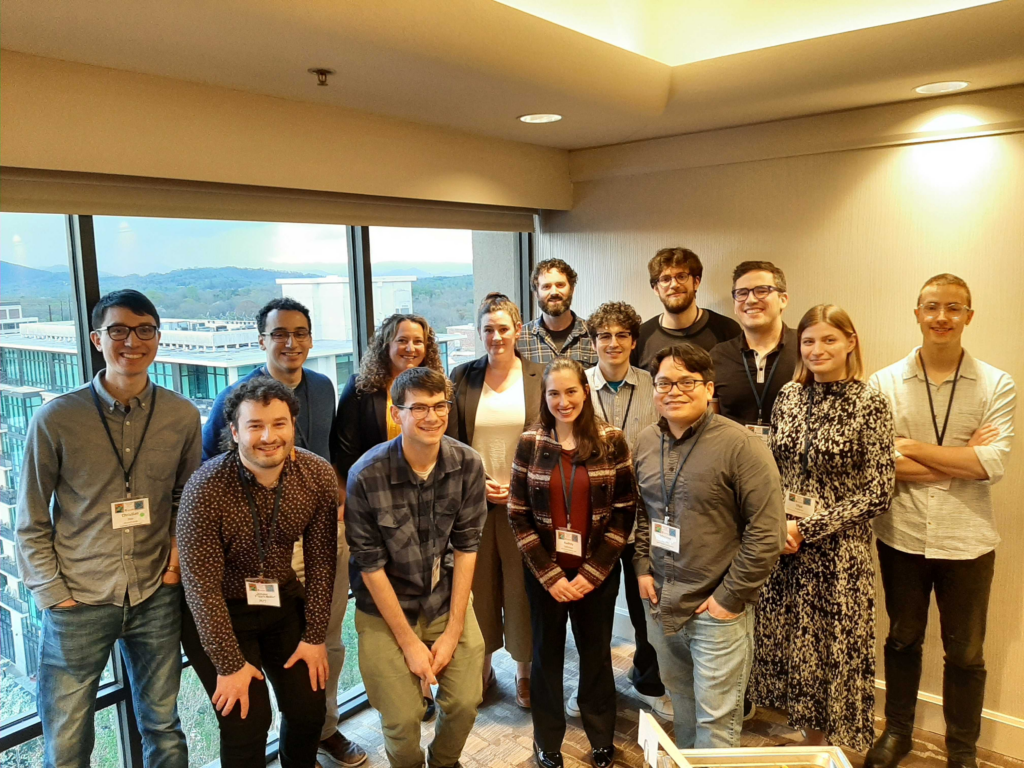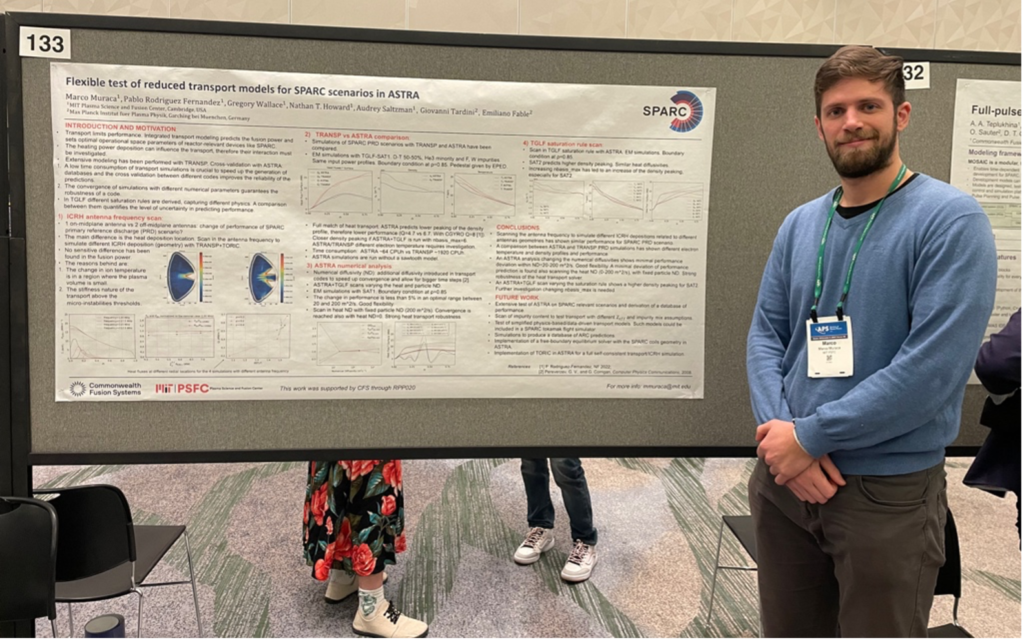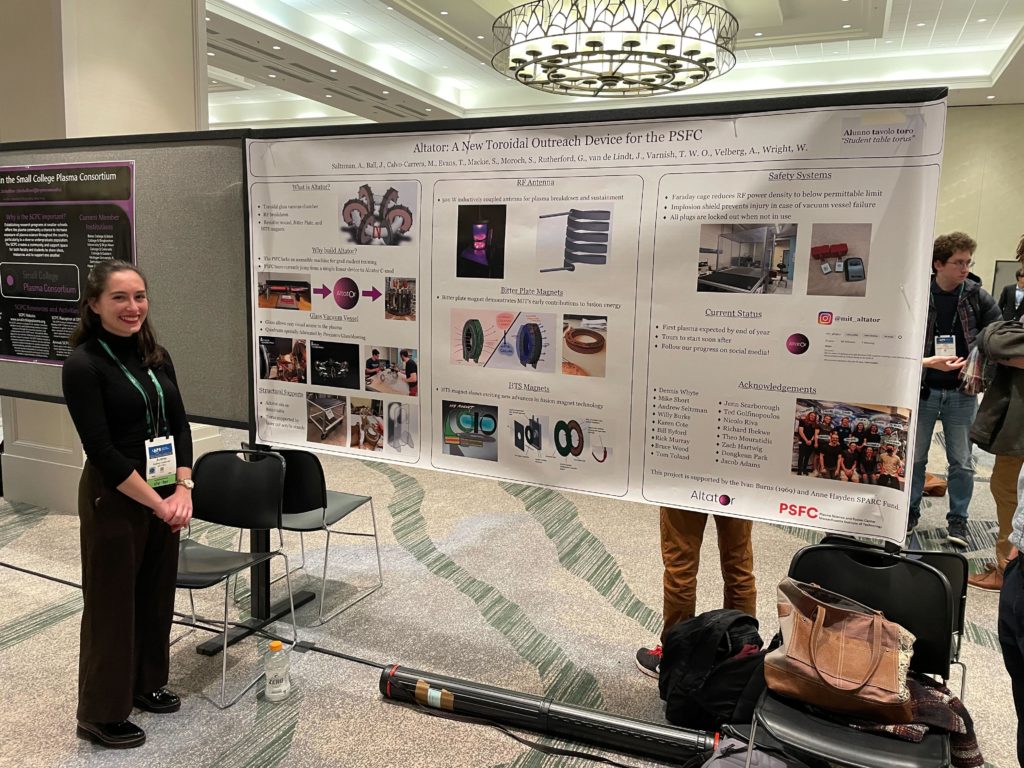MFE-IM Group Attends US-EU TTF Conference
The MFE-IM group travelled to Asheville, NC to participate in the US-EU Transport Task Force (TTF) conference, joining researchers from across the country and the European Union to present work related to turbulence and transport in fusion plasmas. The group delivered two talks as well as presenting six posters!

Audrey’s poster “On the effect of empirical modeling core transport assumptions in tokamak design” aimed to place future tokamak power plant design on a physics-based foundation.
She investigated the dependence of fusion power and Q factor on the shape of the profiles and physics assumptions used as inputs to POPCON empirical models. Her work advances on previous empirical modeling by randomly sampling thousands of combinations of these physics assumptions in order to find the operational point with the highest probability of success.
Her results show that the SPARC operational point with the greatest probability of success differs from the optimal point chosen from naïve deterministic optimization.
Vince presented a poster entitled “Developing a Neural Network Surrogate Model for Fast Integrated Modeling of SPARC,” showcasing his work building a machine learning surrogate model of the widely-used TGLF quasilinear turbulence code.
Vince’s work with running millions of TGLF simulations culminated in a neural network model which reproduces the correct heat and particle fluxes and is specifically trained to predict turbulent transport in SPARC. He plans to use this surrogate model to support realtime predictions of SPARC plasmas and scenario design.

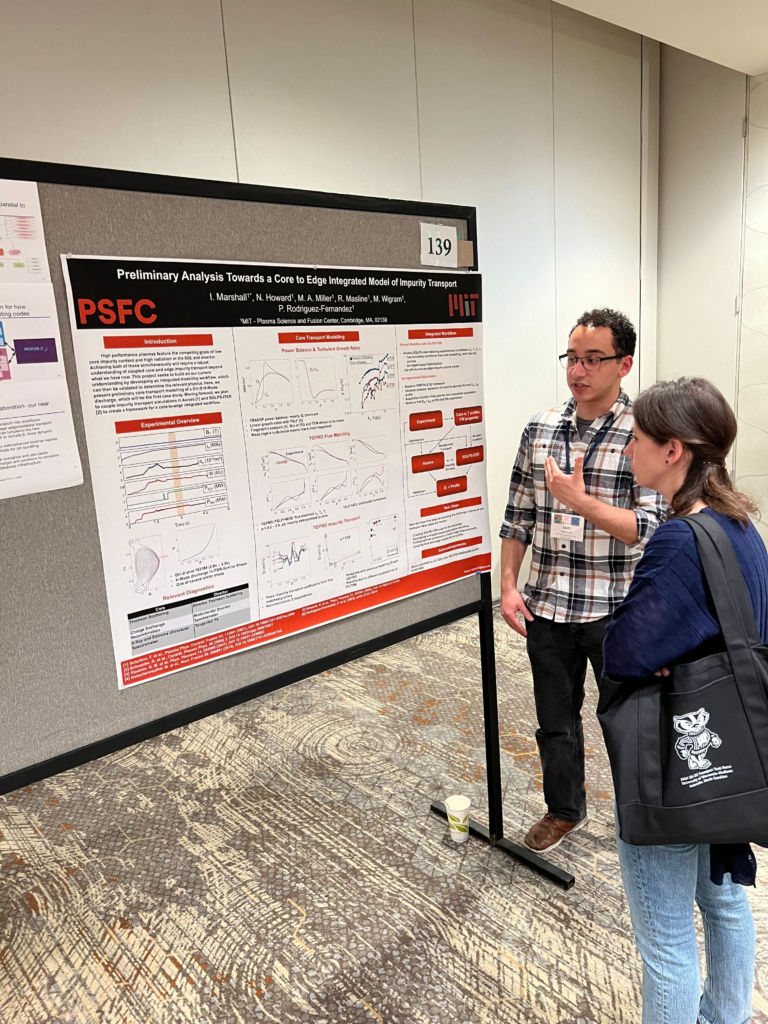
Ivan’s Poster “Preliminary Analysis Towards Developing a Core to Edge Integrated Model of Impurity Transport” focused on his PhD work of creating a fully core to edge model of impurity transport, validated on experimental results from the DIII-D tokamak.
He presented TGLF and TGYRO predictions of impurity transport in the core and outlined a workflow for future simulations, in which he plans to couple the SOLPS-ITER edge transport code with the AURORA impurity source model, using optimization tools developed by MFE-IM to produce truly core-edge impurity transport predictions.
Pablo’s talk on “Predictions of Core Transport and Performance in SPARC First-Campaign Plasmas with Nonlinear CGYRO” outlined recent work done to predict the performance of L-mode breakeven and near-breakeven SPARC plasmas which will be produced at the beginning of operation.
His results predict a path to breakeven operations in the early days of SPARC, while highlighting challenges with core-edge integration. In addition, Pablo served as the Core Turbulence and Transport session chair.
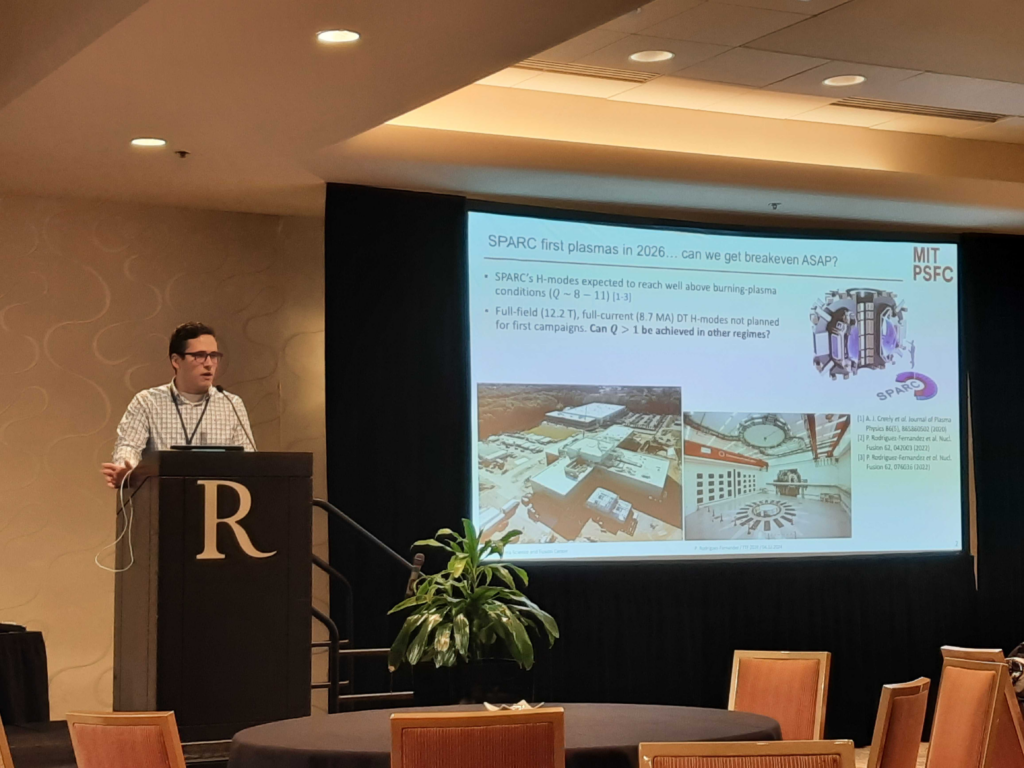

Marco delivered a talk “Sensitivity Study of SPARC Full-Field H-Mode with a Quasi-Linear Transport Model,” in which he presented results from a database of integrated transport simulations of SPARC.
He investigated the effect of modeling assumptions on H-mode access, fusion gain, and fusion power and presented a workflow that can be used for scenario design in SPARC first campaign plasmas.
A key finding was that core performance depends highly on the temperature and pressure at the top of the pedestal, which is one of hardest quantities to model predictively, and was a major focus of many other presentations at the conference.
Joe’s Poster “Predictions of Pedestal Height and Integrated Modeling of Performance and Transport in ARC” outlined work done to create a neural network surrogate model of the pedestal pressure in ARC- a vital boundary condition for core transport simulations- and used this model to produce the first integrated transport simulations of ARC using the ASTRA transport code.
Joe, along with PSFC visiting student Olga Paikina (UiT The Arctic University of Norway), received student poster awards for their work. Congrats Olga and Joe!


Rachel presented on “Gyrokinetic modeling of negative triangularity plasmas in ASDEX Upgrade,” in which she analyzed the effect of changing the triangularity of the plasma on the heat flux and performance of AUG discharges.
In addition, she used a data from the CECE diagnostic to determine that the turbulence fluctuations are smaller for negative triangularity plasmas than for positive triangularity. She also demonstrated good agreement between Gyrokinetic modeling with CGYRO and quasilinear turbulence calculations with TGLF.
Nathan’s Poster entitled “Insights Into the Origin of Electron Density Peaking Obtained from Nonlinear Gyrokinetic Profile Predictions” showed progress in using showed progress in using first-principles profile predictions with PORTALS-CGYRO to explain the shape of core profiles.
His results give new physics insight on empirical relations between the plasma collisionality and the density peaking (the ratio of electron density at the center of the plasma to the volume averaged density), which is strongly related to fusion performance.


